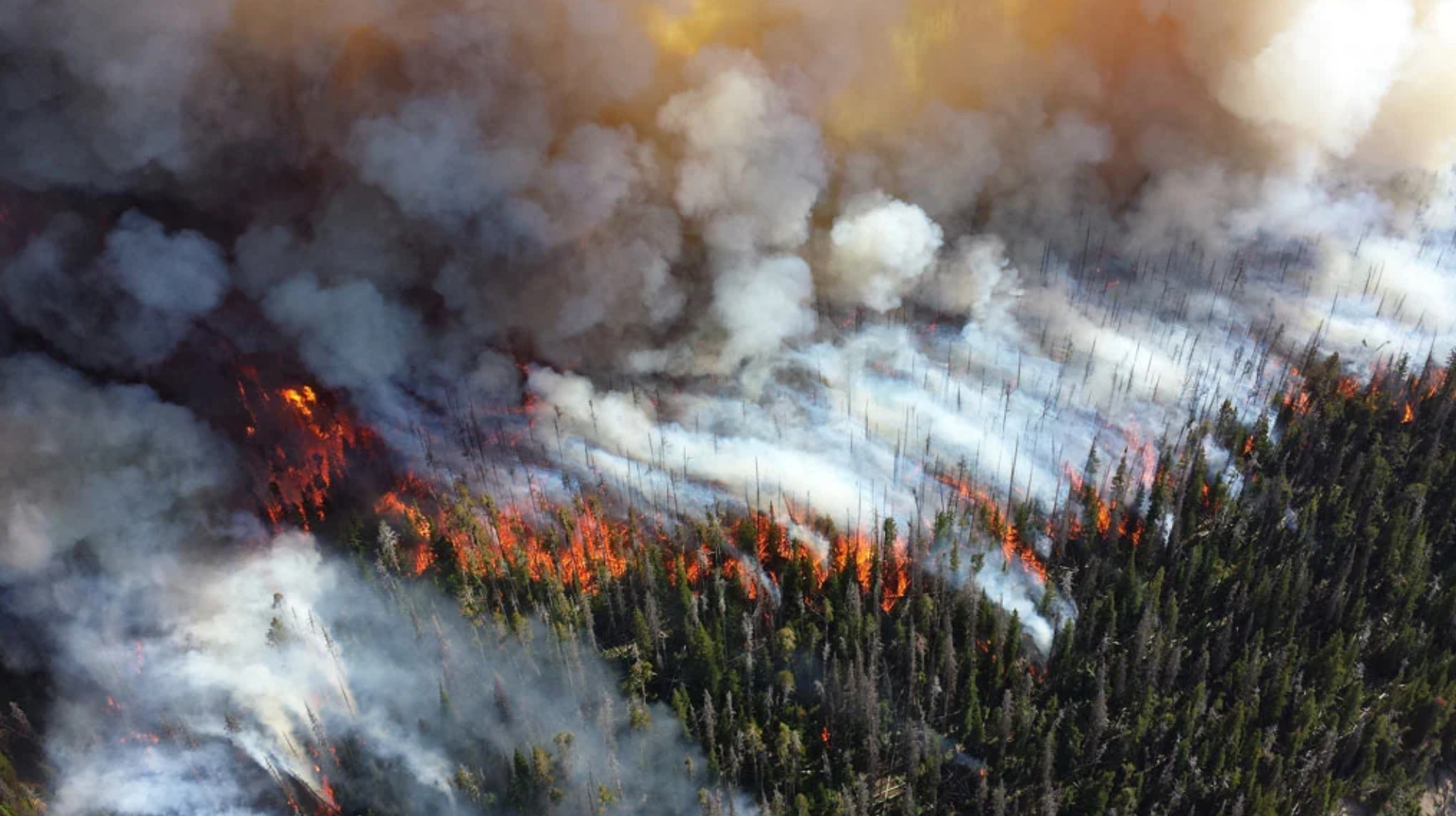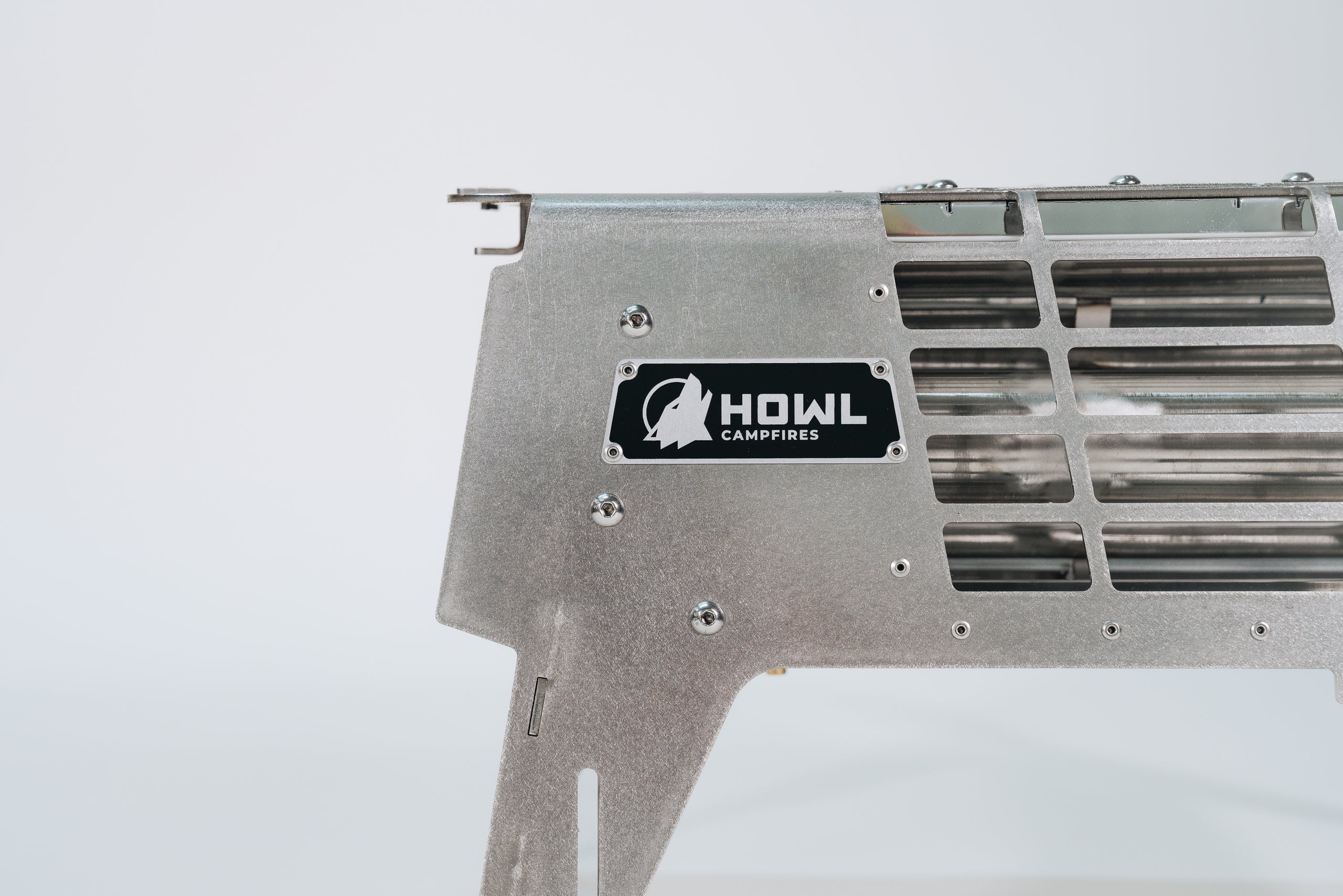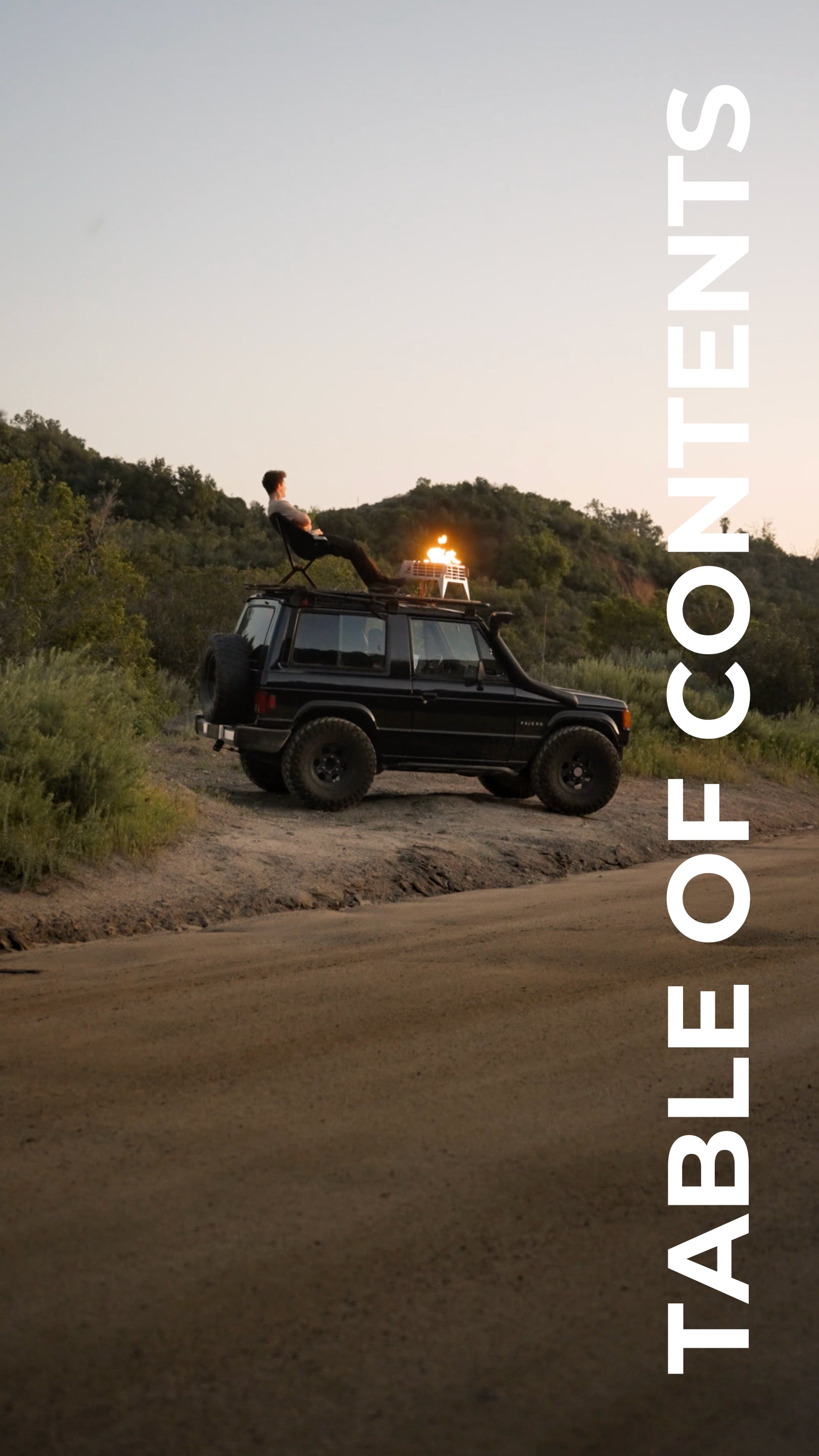

The HOWL Campfire:
- Steams Water Right Out of Your Clothes
- Burns Twice as Hot as Other Propane Fires
- Cranks Out More Heat With Less Fuel
- Works in 120 MPH Winds
- Makes Your Fuel Burn Hotter than Normal
- Keeps The Ground Beneath Cool
- Blazes More Firelight With Less Fuel
- Delivers Dark Heat for Stargazing
- Built in the Same Factories as NASA
- Cut, Bent and Welded in the USA
01.
It steams freezing water off your clothes in 3 mins
The HOWL Campfire shoots out Infrared rays so intense, they'll boil water right out of your river-soaked Carhartts.
No other propane fire can do that.
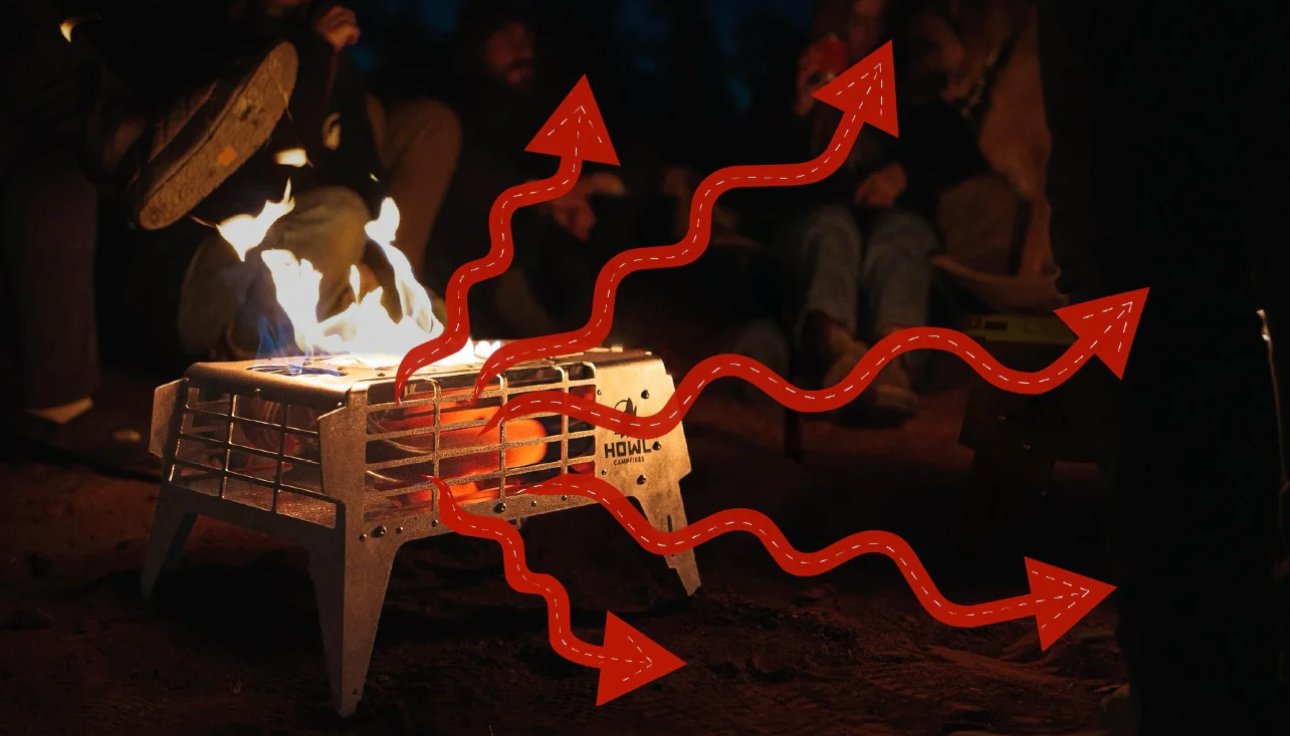
The secret is HOWL's Patented BarCoal™ Technology.
It delivers soul-warming heat, the kind you know from red-hot wood coals.
02.
IT BURNS TWICE AS HOT AS OTHER PROPANE FIRES
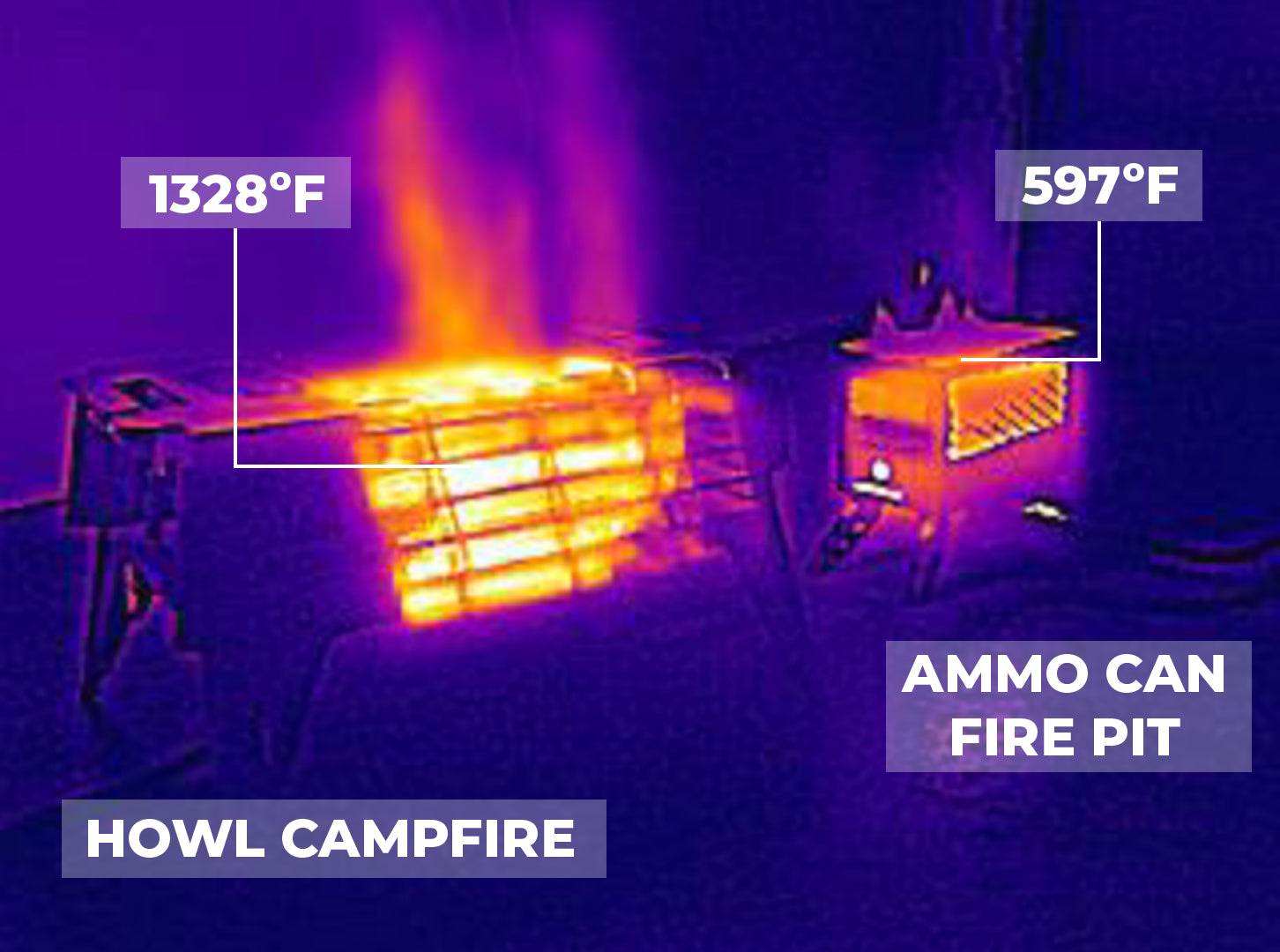
Flames-only fire pits typically burn at 550-700ºF.
Howl's BarCoal tubes run twice as hot, a blistering 1,200+ ºF.
The engineering is complex, but the conclusion is simple: if you want to be warm, get a hotter fire.
It is as hot as a wood fire, in the same way a wood fire feels, but without the smoke.
It kept us warm like a propane fire never would.
It’s actually warm, broiling even.
03.
IT CRANKS OUT MORE HEAT WITH LESS FUEL
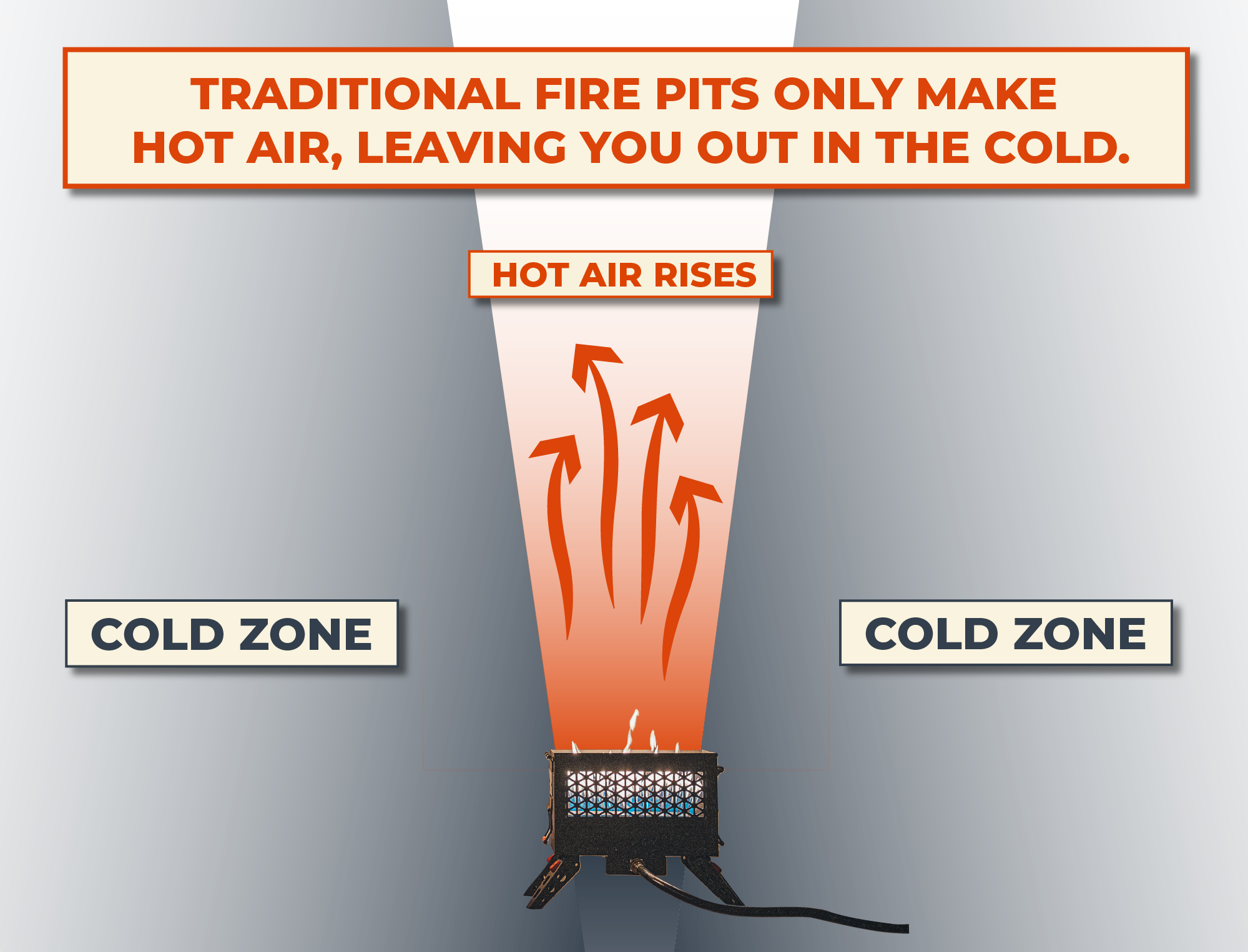
Flames-only fire pits can burn anywhere from 30,000 to 300,000 BTUs of fuel per hour. For practical purposes, a BTU is just an amount of fuel, like a gallon. The more BTUs your fire pit burns per hour (the BTU rating) the faster it drains your tank.
Here's the problem: no matter how much gas you throw at a flames-only fire pit, it can never match the heat you get from a wood fire.
These are different types of heat. Flames make hot air. When you're outside, hot air rises away from you and up into the sky.
That's why you never feel warm next to traditional propane fire pits.
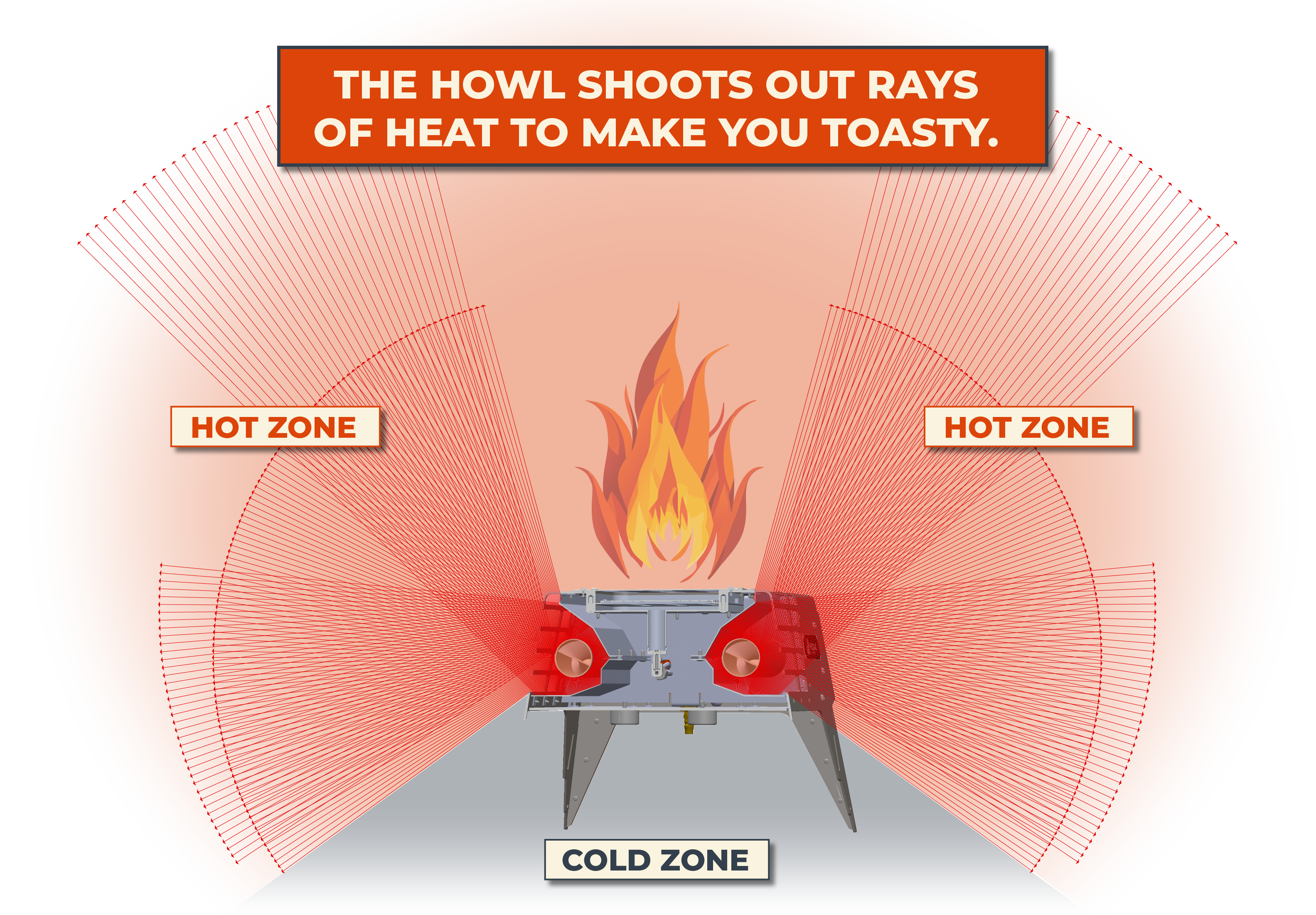
HOWL’s BarCoal Technology doesn’t turn your propane into hot air.
Instead, it converts that fuel into rays of heat – like you get from glowing wood coals, and the sun. These heat rays cut through wind, rain, and snow to warm you to your core.
The EchoHeat Reflector Shields focus the rays on your body. As you absorbs more and more rays, you'll get so hot you have to turn and toast your other side.
With all that heat output, you'd expect the BarCoals to us a lot of fuel. Not so. At just 31,000 BTUs per hour, you and your crew can rotisserie yourselves for 13 hours on a single tank.
04.
IT WORKS IN 120 MPH WINDS
Plus monsoon rains, whiteout blizzards, and any altitude on earth
For the first time in history, humans can have a hot campfire in the gnarliest conditions imaginable. The secret is not what you'd expect. It's all about when you add air to the fuel.
Fuels like wood and propane need oxygen to burn. But traditional propane fire pits add the oxygen way too late. First, they ignite the propane. Second, they rely on the surrounding air to passively feed the flames. This secondary air is often compromised by wind, altitude, and weather, and whenever it is, the flames starve.
HOWL's revolutionary BarCoal Technology doesn’t rely on secondary air. Instead, it actively draws in all the air it needs prior to ignition. This called primary air.
The HOWL is the world's first campfire to use a 100% Primary Air Combustion System. This patented technology makes the HOWL impervious to weather, wind, and altitude.
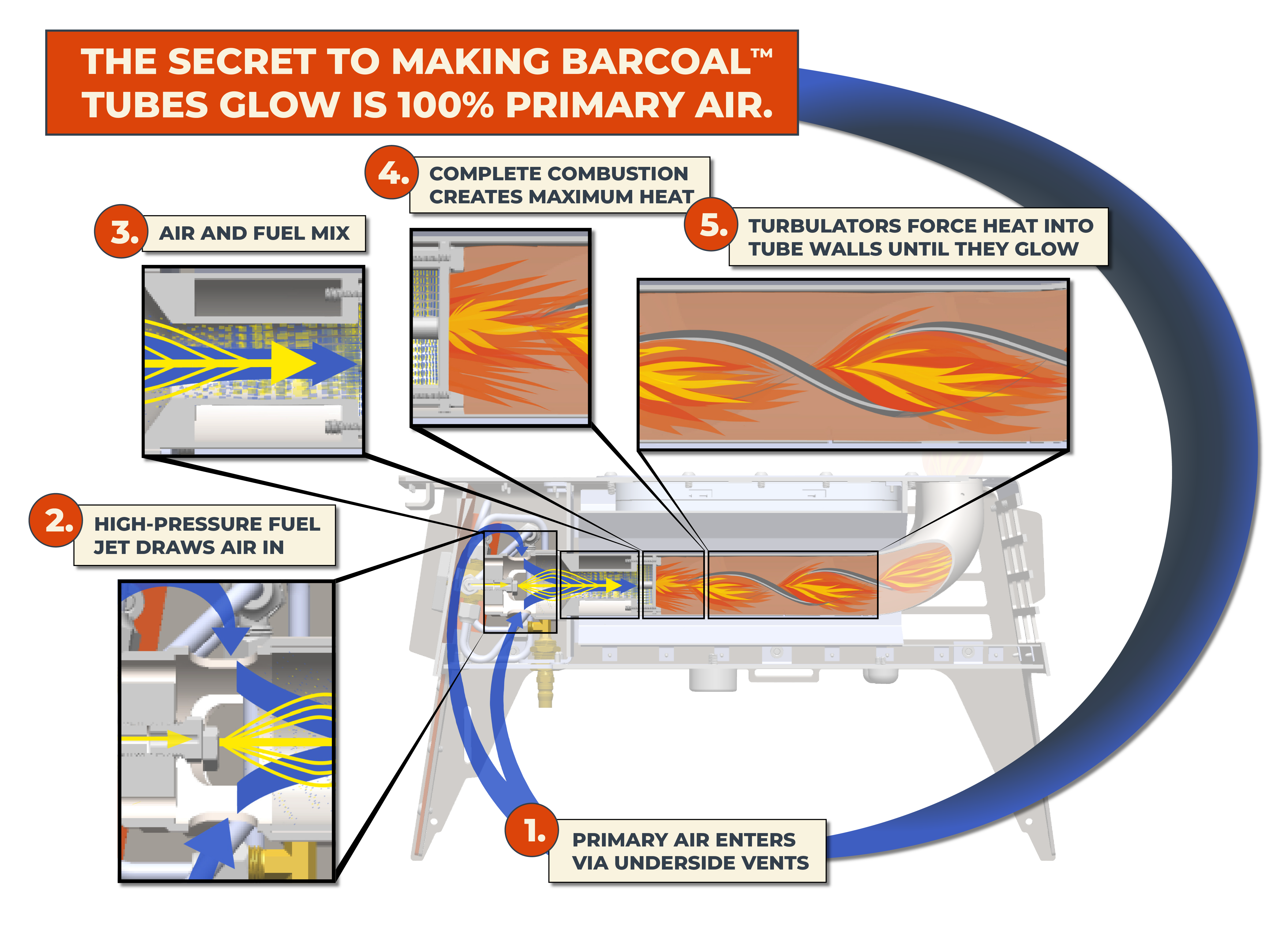
Here's how it works:
1. The HOWL draws air into an enclosed, protected chamber via the underside vents. This reduces the effects of wind.
2. The HOWL blasts a high-pressure jet of fuel into the BarCoal tube. This dynamic stream of fuel pulls in air along with it.
Now here's where it gets tricky.You need a perfect, constant ratio of air and fuel to get a truly hot combustion. But the air's density is always changing with wind, weather, and altitude. So how do keep drawing in the the exact same amount?
The trick is momentum, which is just the amount of gas molecules, multiplied by speed. The density of those molecules – or the spacing between them – has no affect on a gas's momentum. So by focusing on momentum to draw the air into the system, BarCoal Technology keeps its perfect air-to-fuel ratio, even as air density changes.
3. The stream of air and fuel mixes and flows through the venturi, accelerating into the enclosed BarCoal tube.
4. The air-fuel mixture ignites deep inside the tube, where it's completely protected from wind and weather. During testing, the BarCoal Burners kept firing in winds up to 120 mph. They can likely handle stronger winds, but 120 mph was the limit of the testing equipment.
5. The twisted tape turbulators spin the ultra-hot exhaust gases, pushing them into the walls of the BarCoal Tubes. The tube walls soak up the heat and illuminate. That orange glow is the light emitted in the visible spectrum.
The BarCoal Tubes radiate a great deal more light in the invisible Infrared spectrum. These invisible rays are what your body absorbs as thigh-melting, soul-warming heat.
05.
It makes propane burn much hotter than normal
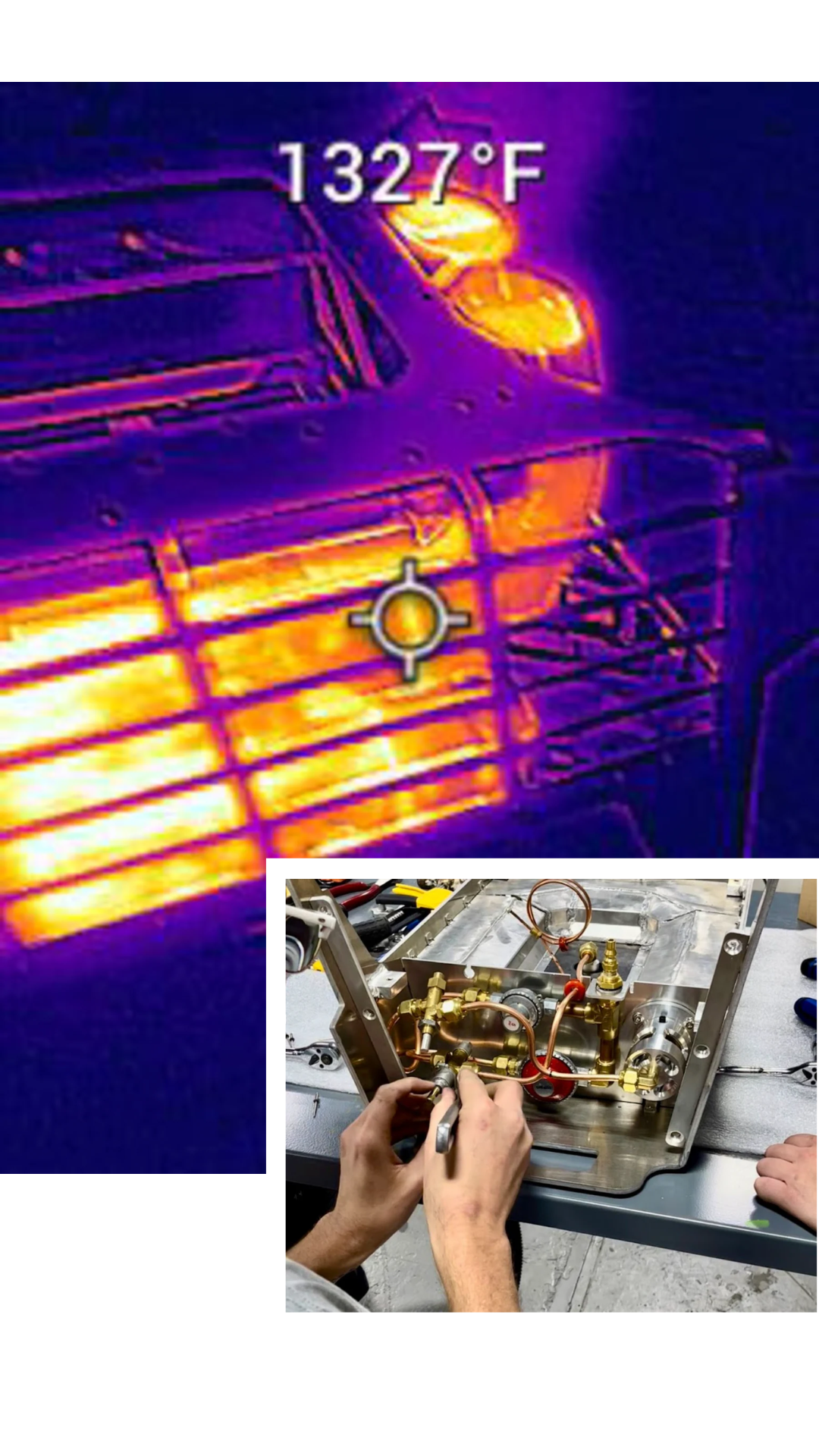
The propane inside the BarCoal Tubes burns at roughly 3,560 ºF – a temperature that propane typically only reaches when mixed with bottled, purified oxygen. For example, welders use oxygen that's 99.2% pure.
But the HOWL uses regular atmospheric air – just 20.9% oxygen – to make stainless steel glow piping hot.
Such an intense burn requires slightly more than 16 molecules of air for every 1 molecule of propane. If the ratio is off even by a fraction, either too rich or too lean, the temperature will fall.
The HOWL holds its air-to-fuel ratio steady no matter the wind, weather, altitude, impacts, vibration, road grit, and whatever else your adventures might bring.
How? It took our team of engineers from MIT and Cornell three years. We ran complex fluid dynamics equations, built dozens of prototype iterations, and performed hundreds of tests in the lab and in the field.
The result speaks for itself.
For the first time ever, you can have a truly hot campfire in any condition on earth.
06.
IT'S MOLTEN HOT, BUT THE GROUND BENEATH STAYS COOL
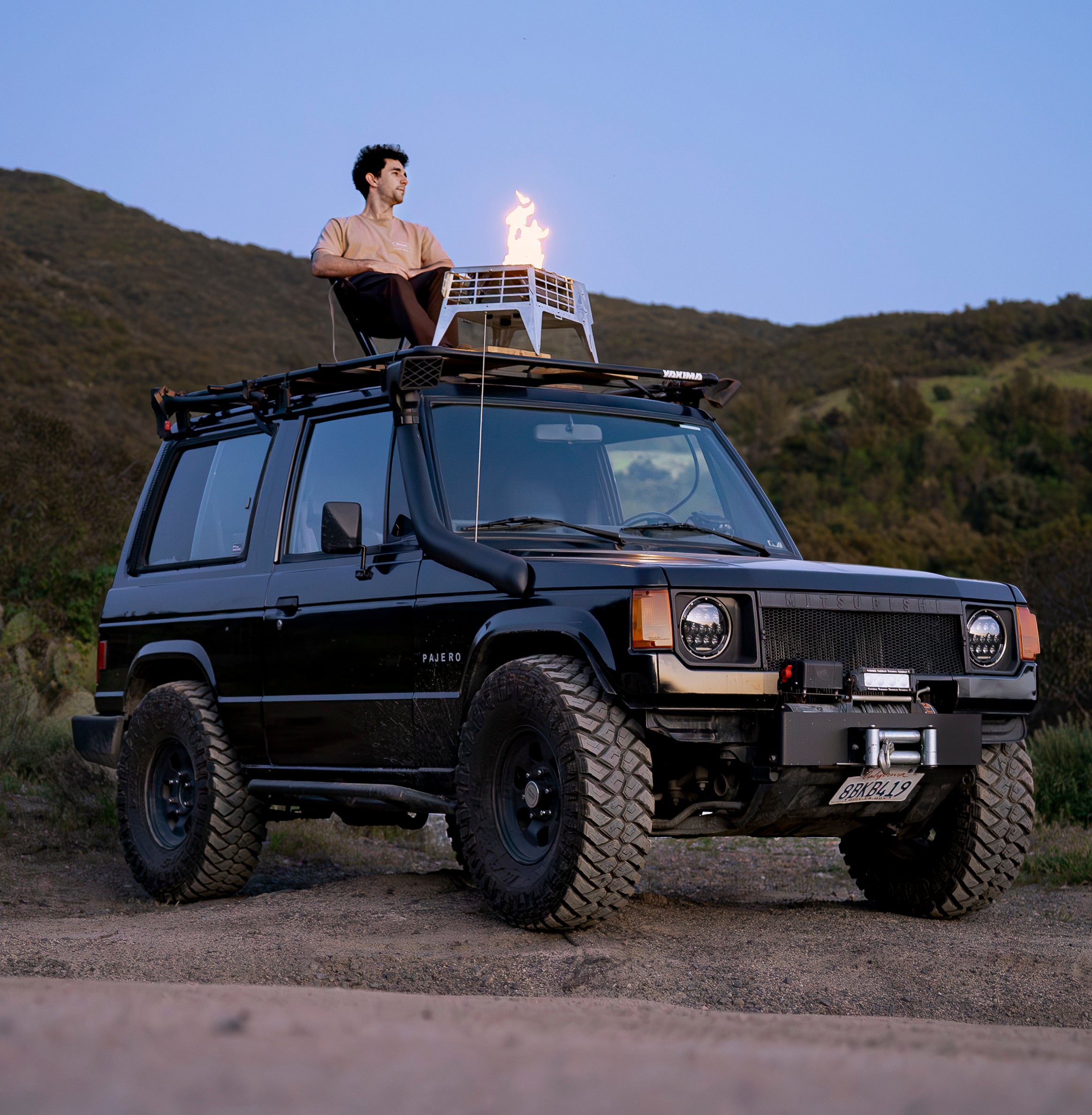
The BarCoal tubes rip at 1200+ ºF and broil everything in their path. But the ground below – just 7 inches away – stays perfectly cool.
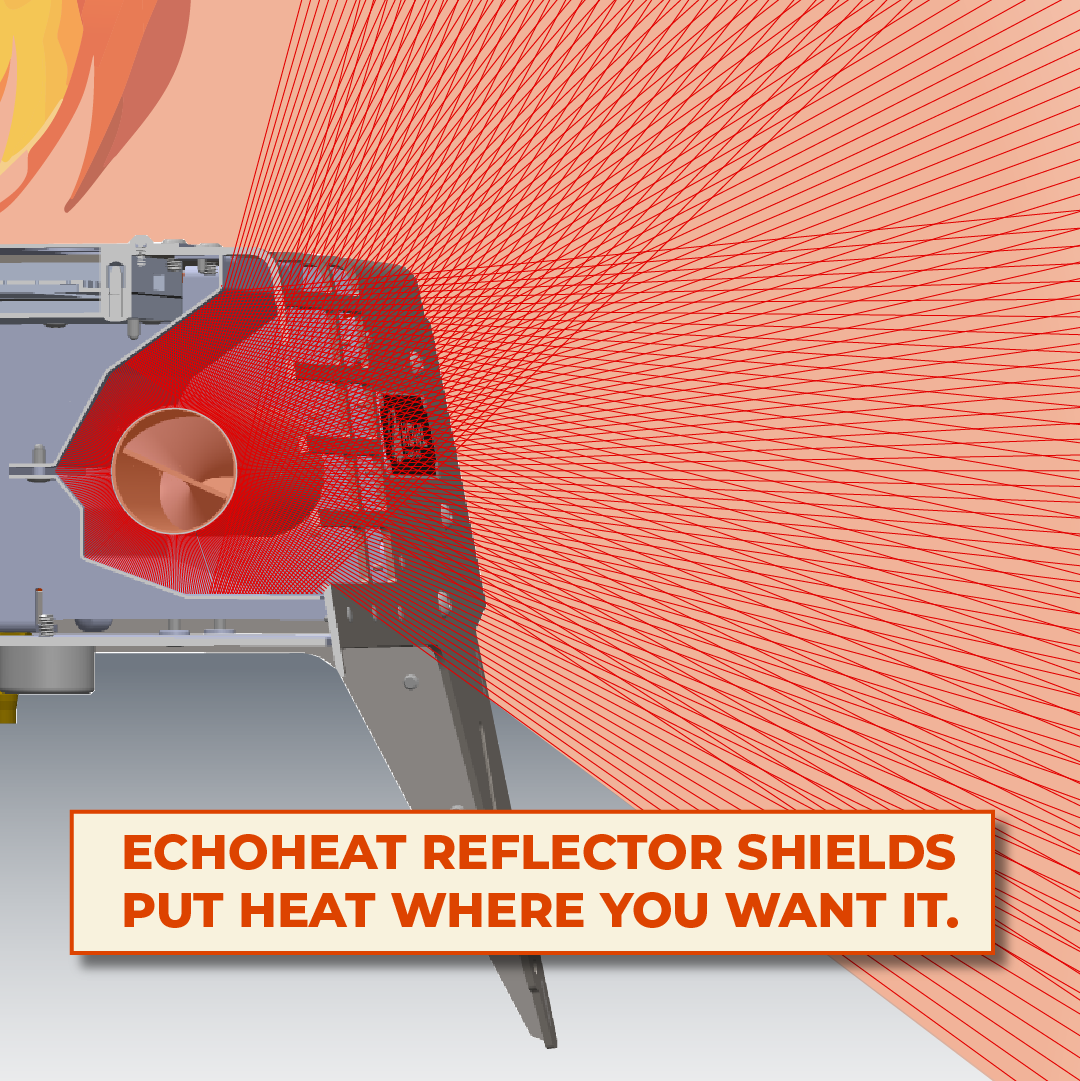
Having complete control over the heat makes the HOWL safer for forests.
It also lets you light bonfires in places you always wished you could – like your back deck, blacktop parking areas, the roof of your rig, and even the bow of your fishing boat.
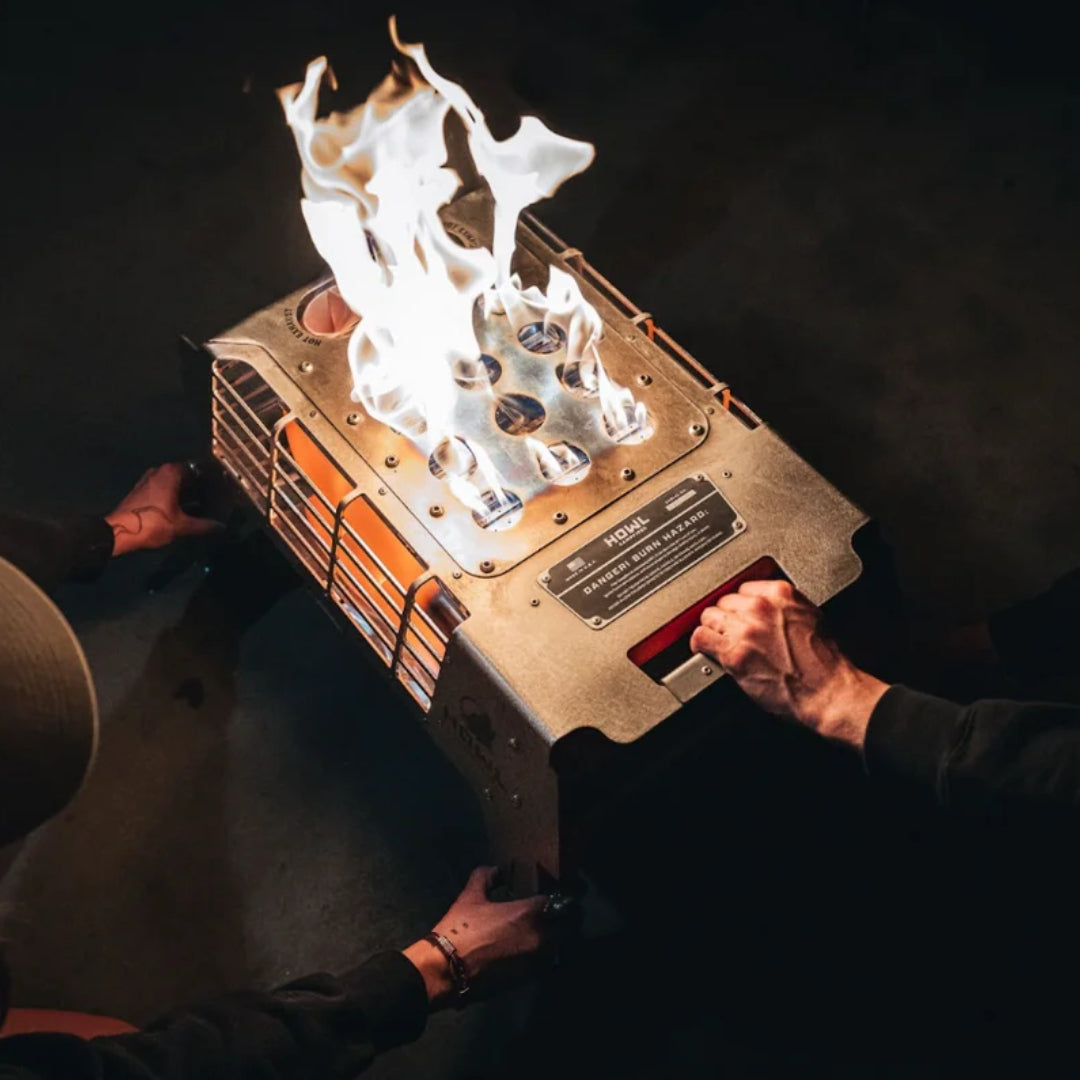
To keep the heat exactly where you want it (and nowhere you don’t), the HOWL uses metallurgy. Each part is made from a carefully selected alloy.
Some metals reflect heat out toward your body, while others work as strategic heat sinks. Some even conduct the heat away from areas you might need to touch, like the legs and the handle.
07.
IT BLAZES MORE FIRELIGHT WITH LESS FUEL
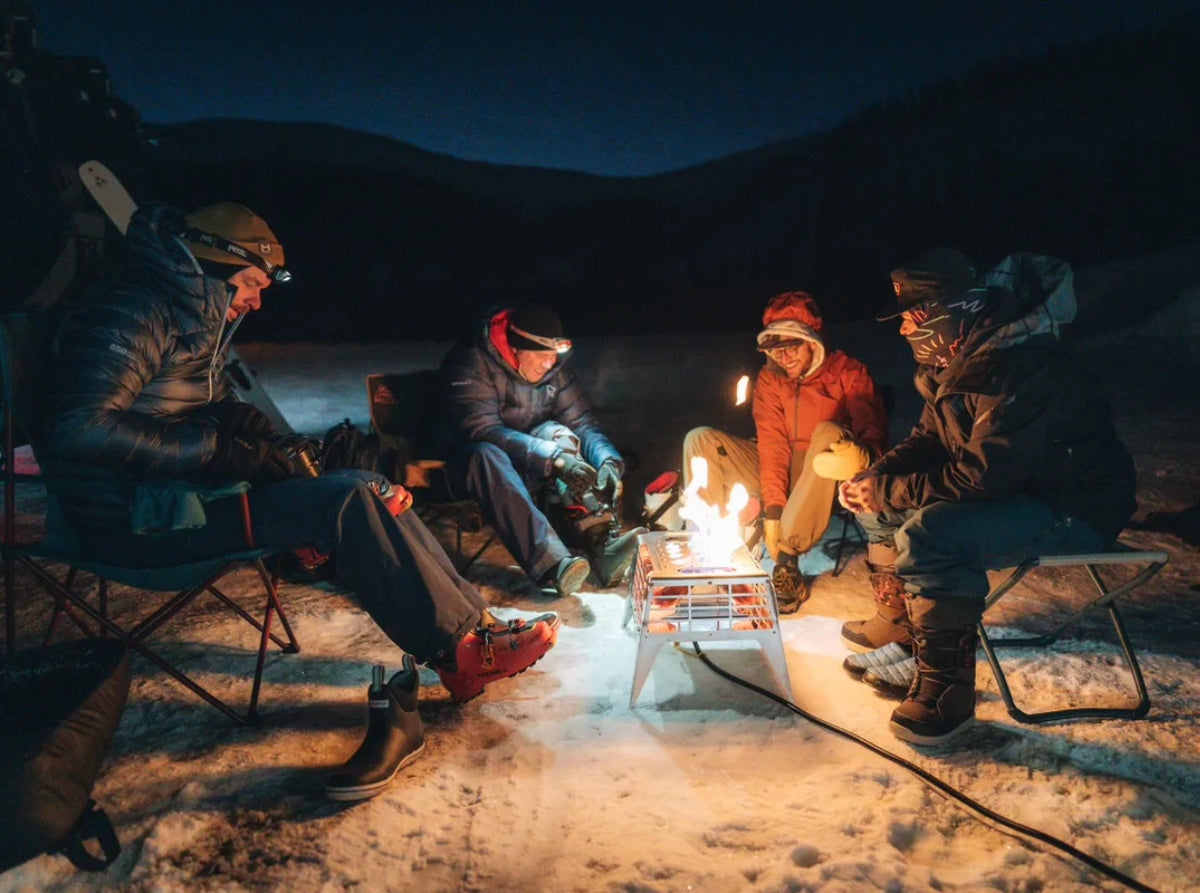
You need firelight for campsite tasks like cooking, eating, working on your gear, and lighting up the faces around you.
The A-Flame burner is a caveman’s dream: tall, bright, and insanely efficient. It towers a full 24” above the HOWL, while using just 31,000 BTUs of fuel per hour.
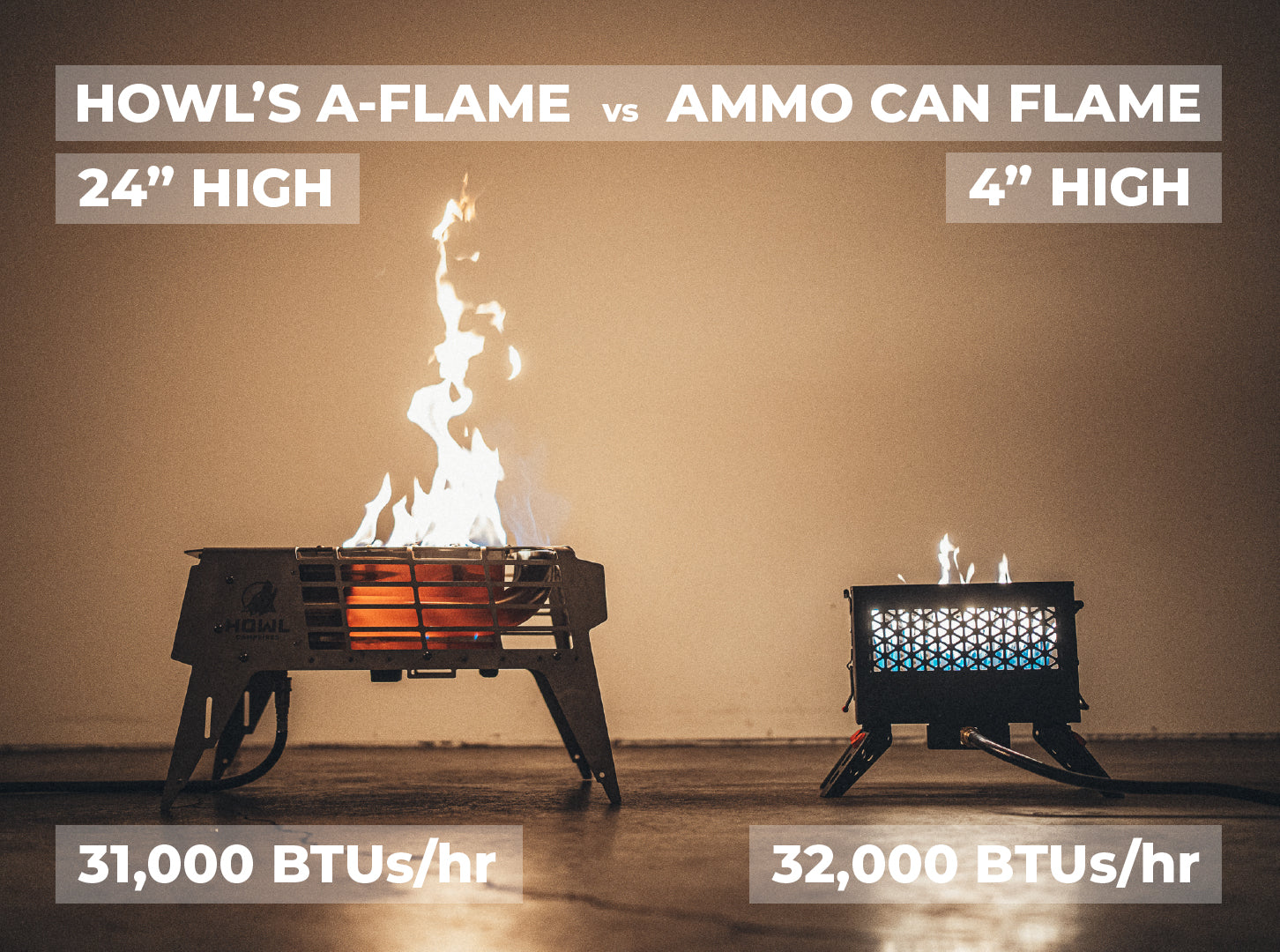
Compare that to the flames of this ammo box fire.
Why such a massive difference?
Because most fire pit burners are just gas pipes with holes punched in them, like what you'd find in an old barbecue. This ammo box fire has 29 large holes spaced far apart. Each one creates a separate, short flame, which doesn't look or feel much like a wood fire.
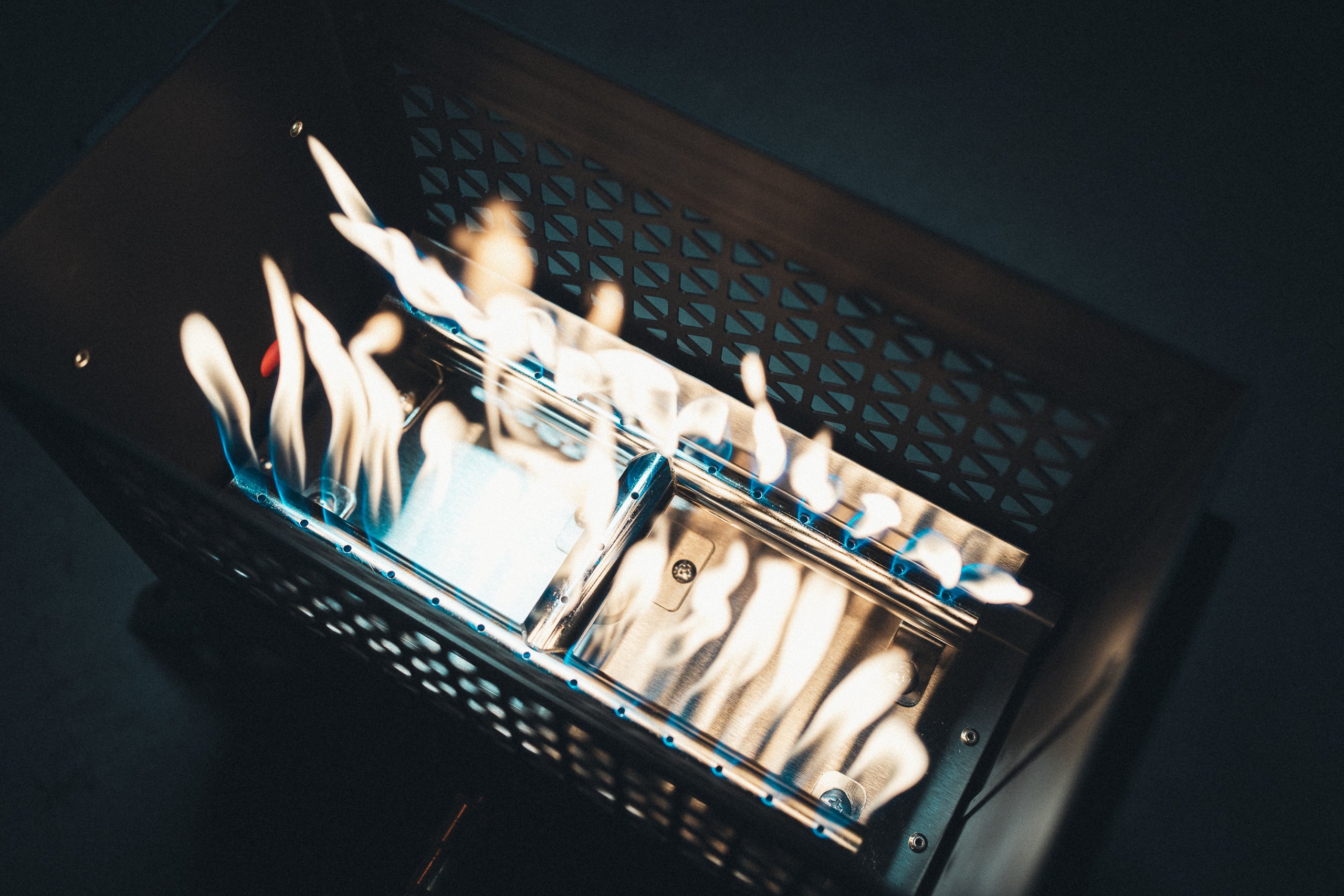
The HOWL's A-Flame builds a taller, brighter flame without using more fuel. That's because it uses the principles of fluid dynamics.
The HOWL’s A-Flame burner has 160 precision-machined micro-emitters, each of them making a very tiny flame. But with some clever engineering, they join forces and leap toward the sky – just like the flames of a wood fire.
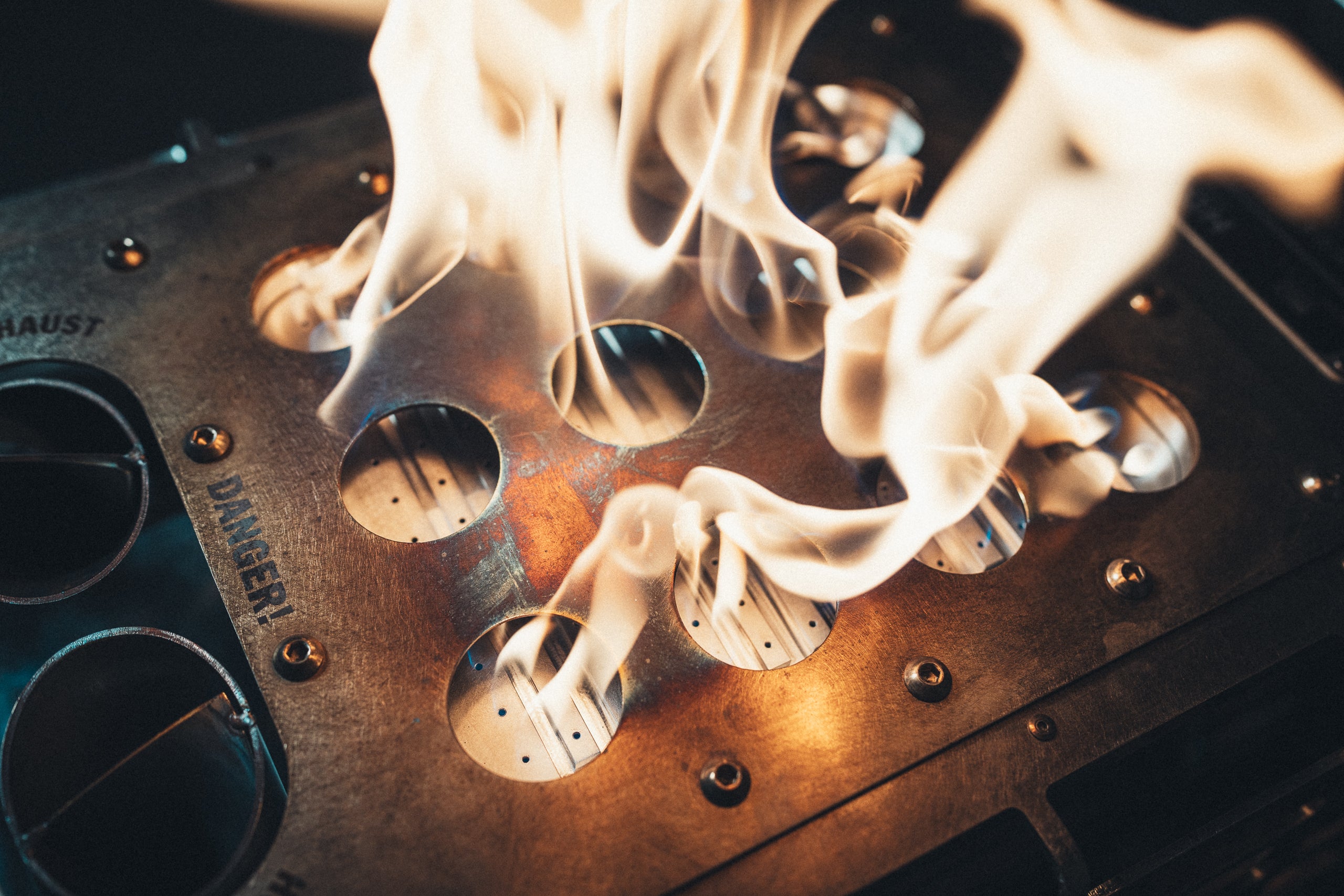
All open flames are susceptible to wind, and if the gusts are strong enough, they can even be blown out.
To deal with the wind, old fashioned fire pits hide the burner at the bottom of a box, or a bowl. The vertical metal walls protect the flames from the wind, but they also hide the flames from you, shading out a lot of the usable light.
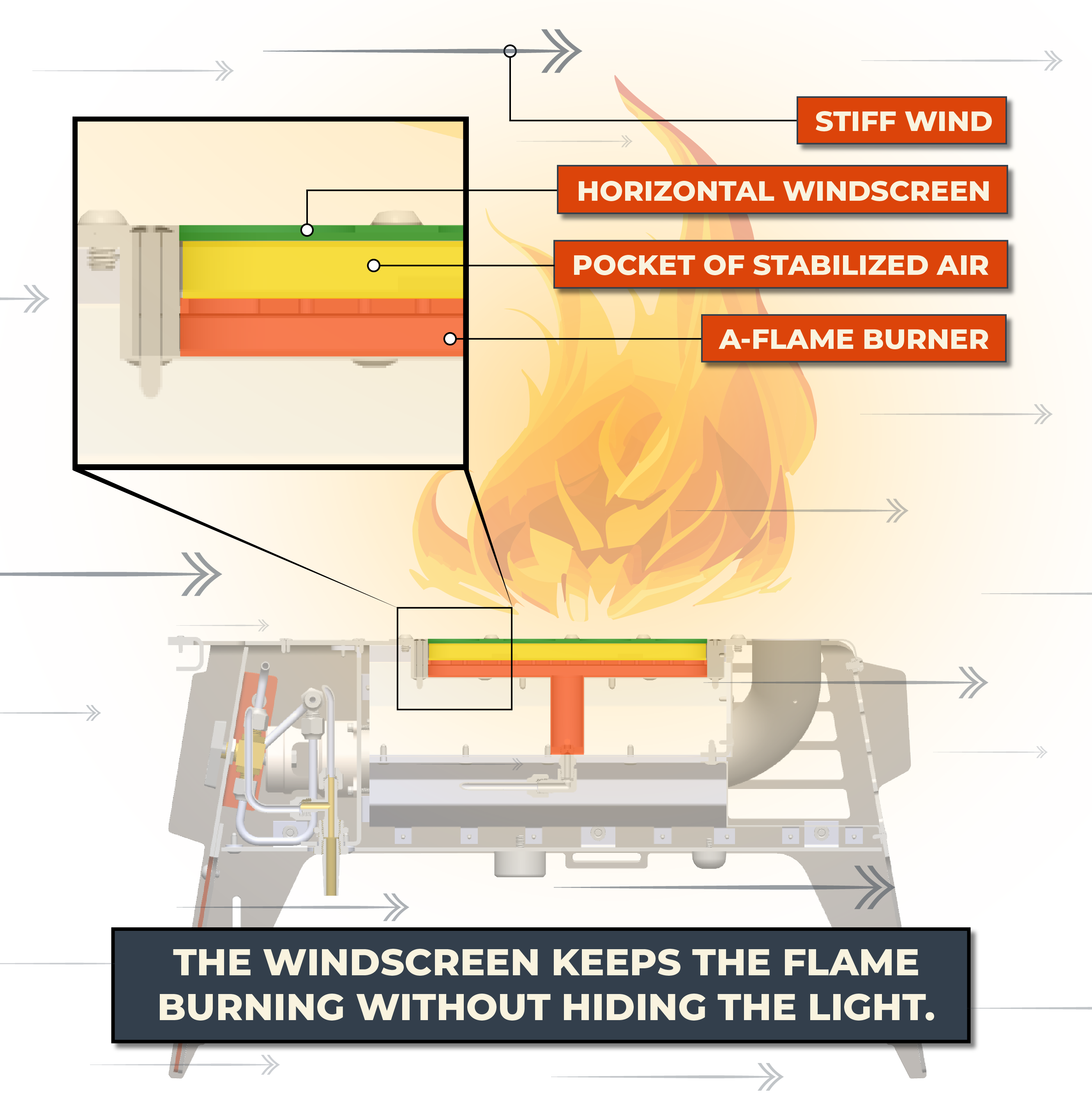
The A-Flame Burner doesn't put walls between you and the flames.
Instead, it uses a horizontal Windscreen that keeps the flames exposed. The Windscreen uses laminar separation, so the wind above slides over the top, while the pocket of air below stays largely undisturbed.
This gives the base of the A-Flame a place to live, so it can stay lit in 45+ mph winds. And if a particularly strong gust does blow it out, it simply re-ignites from the windproof BarCoal.
08.
IT’S THE ONLY FIRE PIT WITH A STARGAZING MODE
The HOWL has three different operating modes, which are as simple as running only the A-Flame, only the BarCoal, or running both burners together.
Both burners on high will last 6.5 hours on a single tank. Running just the A-Flame or just the BarCoal, you'll get 13 hours on a tank.
These are HOWL's three modes and how to use them:
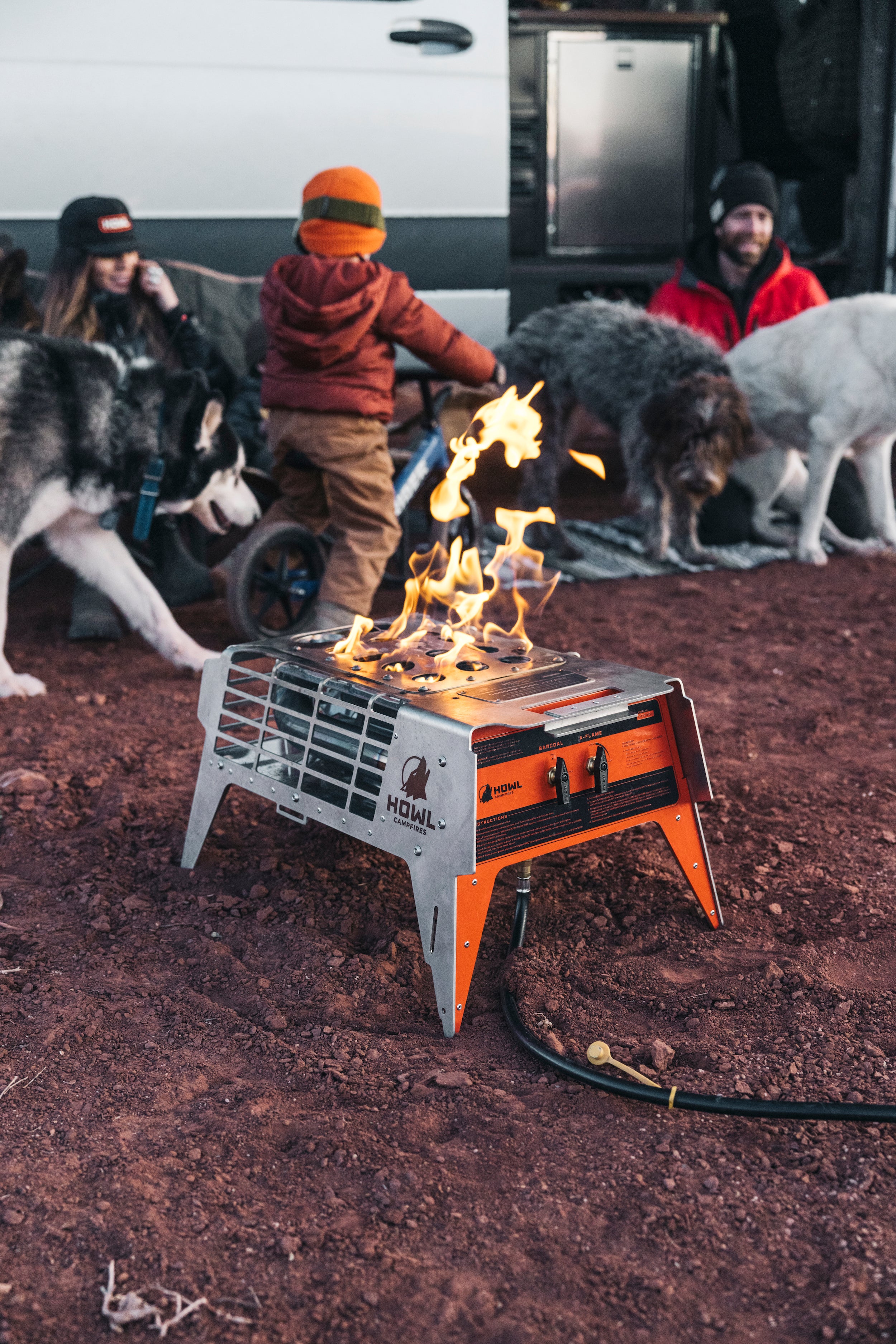
Lantern Mode
Just after sunset, you'll light the A-Flame, giving you bright firelight for cooking and working on your gear. Since the air is still warm, you don't need heat, so you'll leave the BarCoal off.
Lantern Mode is all firelight and no radiant heat.
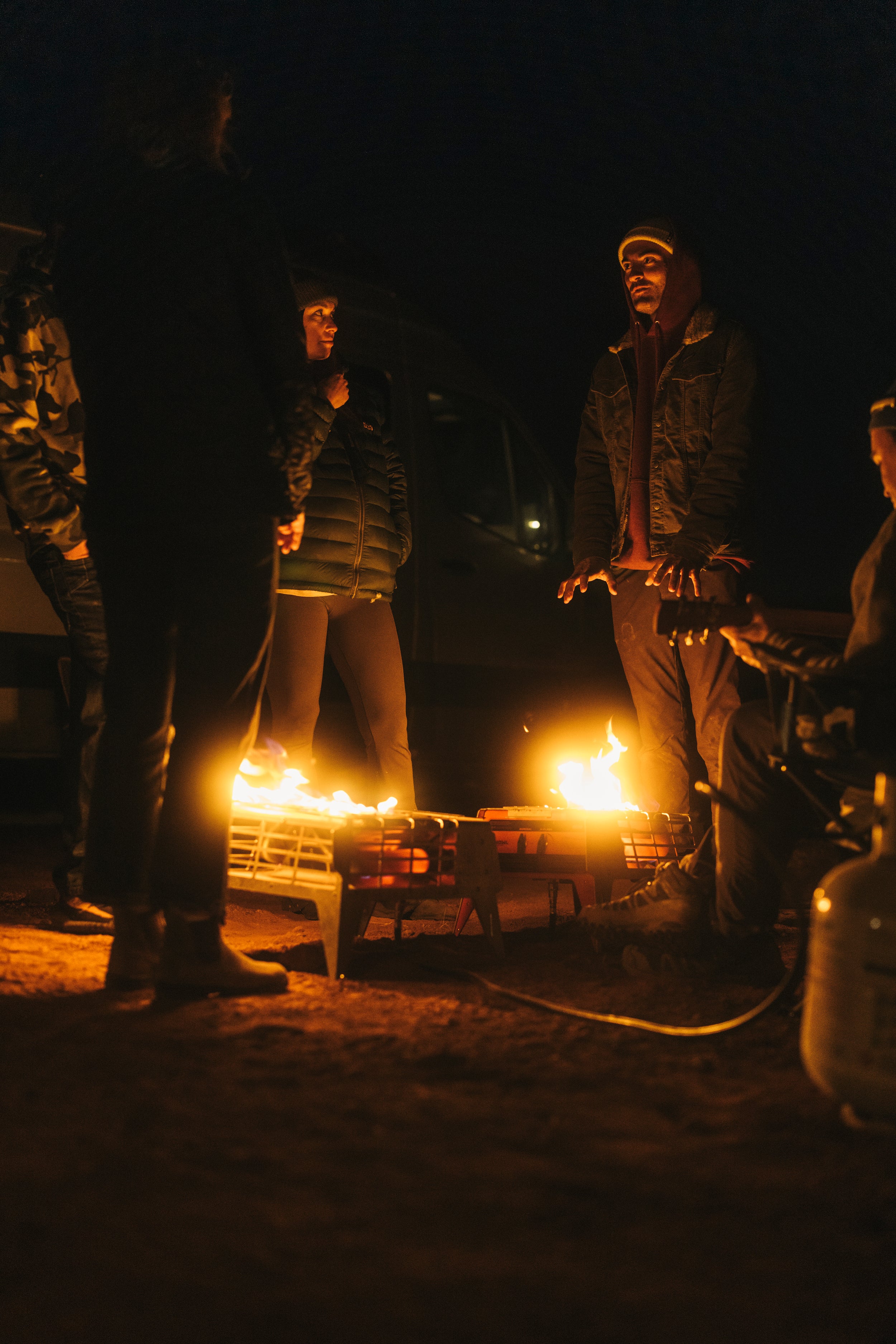
Campfire Mode
As the temperature drops, you'll start to feel the cold. You're already using the A-Flame for light, but now you'll turn on the BarCoal and start toasting your thighs.
Campfire Mode is all light and all heat.
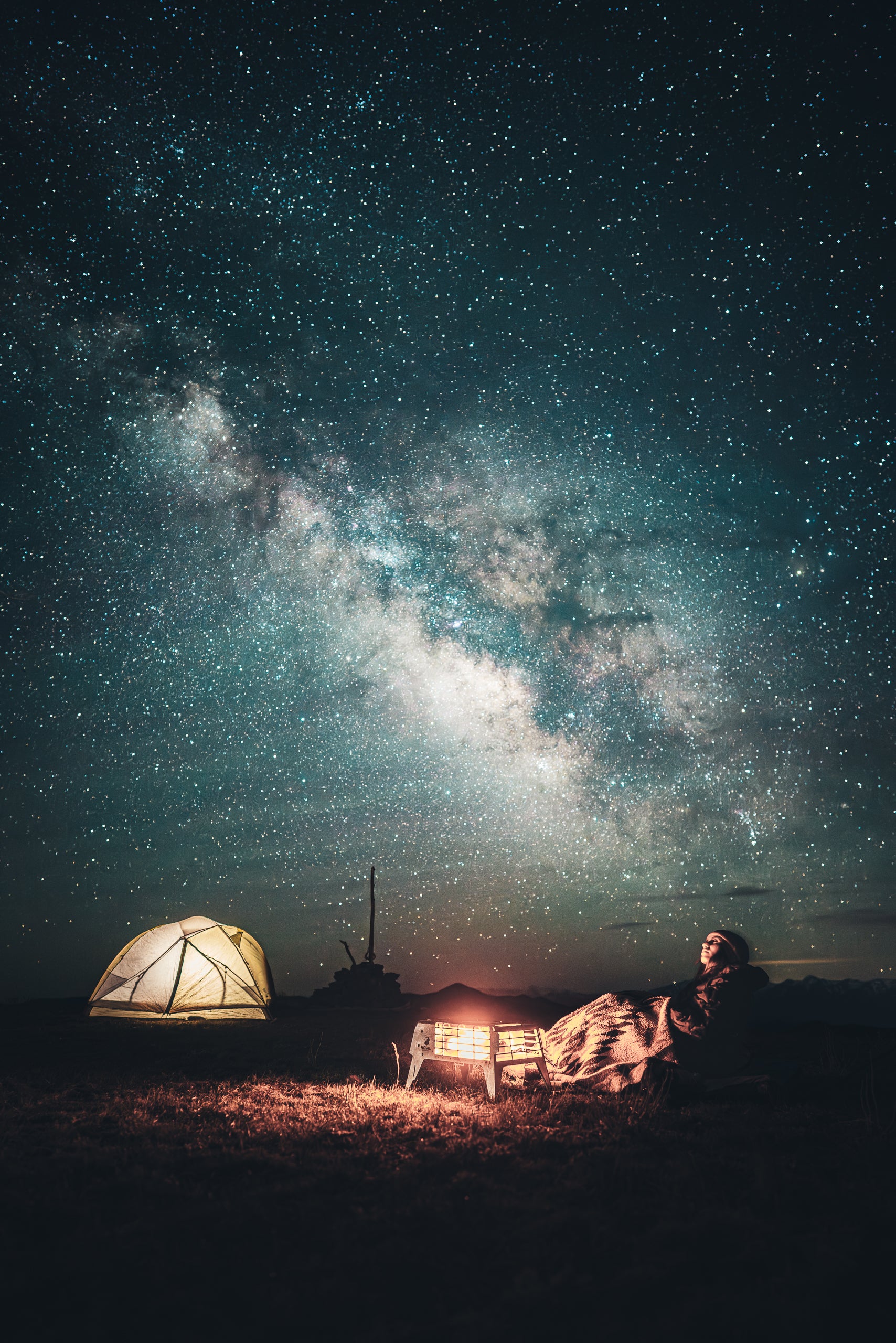
Stargazing Mode
When the work of camp is done, you no longer need the bright light of the A-Flame. So you'll turn it off and keep the BarCoal for heat.
Suddenly, the HOWL is like the end of a wood fire. The flames die, leaving you with a scorching bed of coals. As your eyes adjust the sky comes alive.
Stargazing Mode is all radiant heat and no firelight.
09.
IT'S BUILT IN FACTORIES SHARED WITH NASA AND TESLA
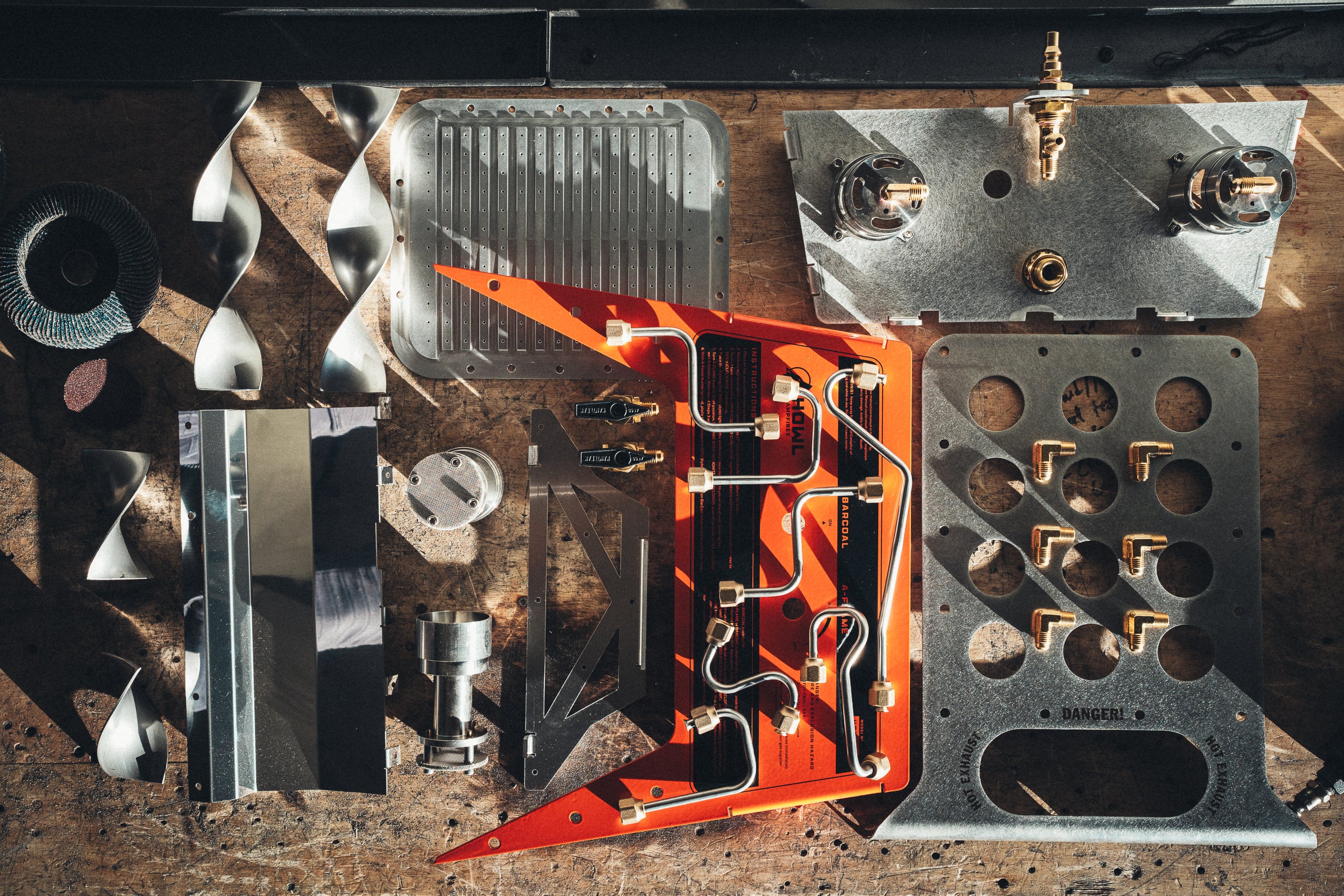
Exactly 272 parts make up the HOWL Campfire. Most of the internal components are “aerospace grade,” which we make in a factory that builds parts for the International Space Station.
“Aerospace grade” is not marketing speak. It’s a manufacturing designation for parts where, if they were to fail during a space mission, people would die. Aerospace-grade parts are so precisely designed, so accurately made, so completely checked, and so impervious to temperature, impact, and vibration, that people’s lives can hang on them.
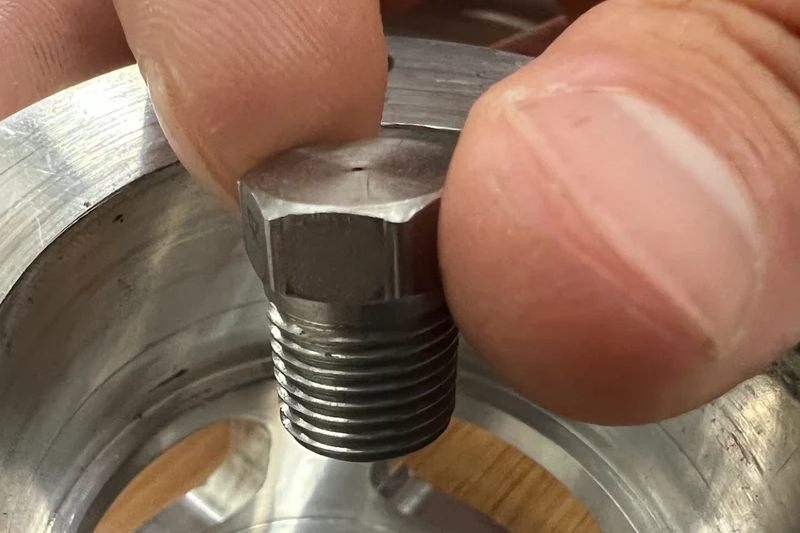
One of the HOWL’s aerospace-grade components is the Fuel Jet Orifice. It looks like a small, standard bolt from the hardware store. But it’s actually the main driver of HOWL’s patented 100% Primary Air Combustion System.
If any interior surface of the Jet were out of spec by even a microscopic amount, you'd end up with BarCoal tubes that don’t get hot enough to glow.
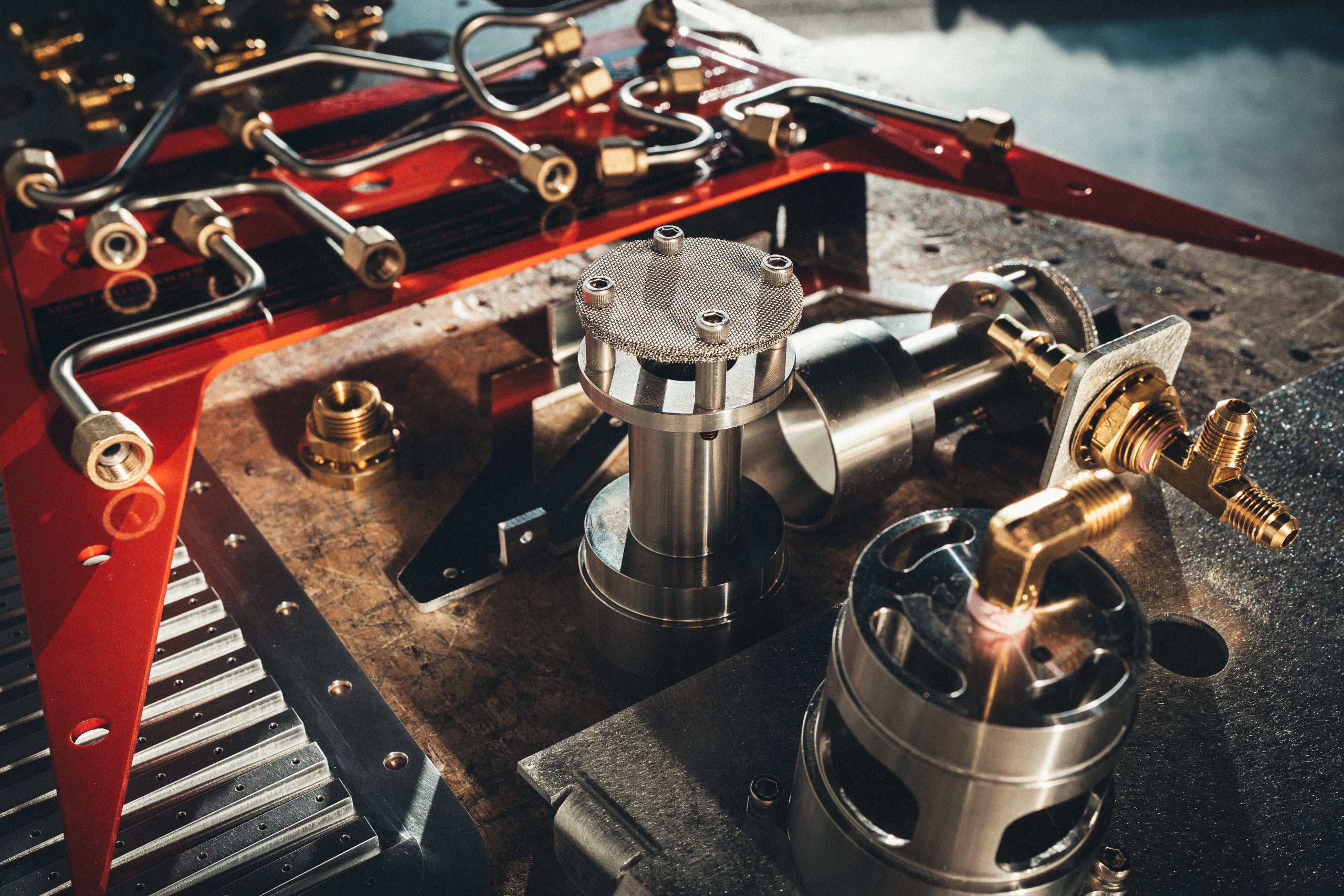
The back side of the Fuel Jet Orifice is threaded for a gasketless fuel connection. The only way to make these sealing threads leak proof is to use a Swiss Screw CNC Machine – the same machine Rolex uses to make precision watch gears.
All of the HOWL's aerospace-grade components – including the Jet – are hidden inside the control compartment.
You’ll never see them when using your Campfire. But you'll certainly feel their heat.
10.
IT’S CUT, BENT, AND WELDED IN THE USA
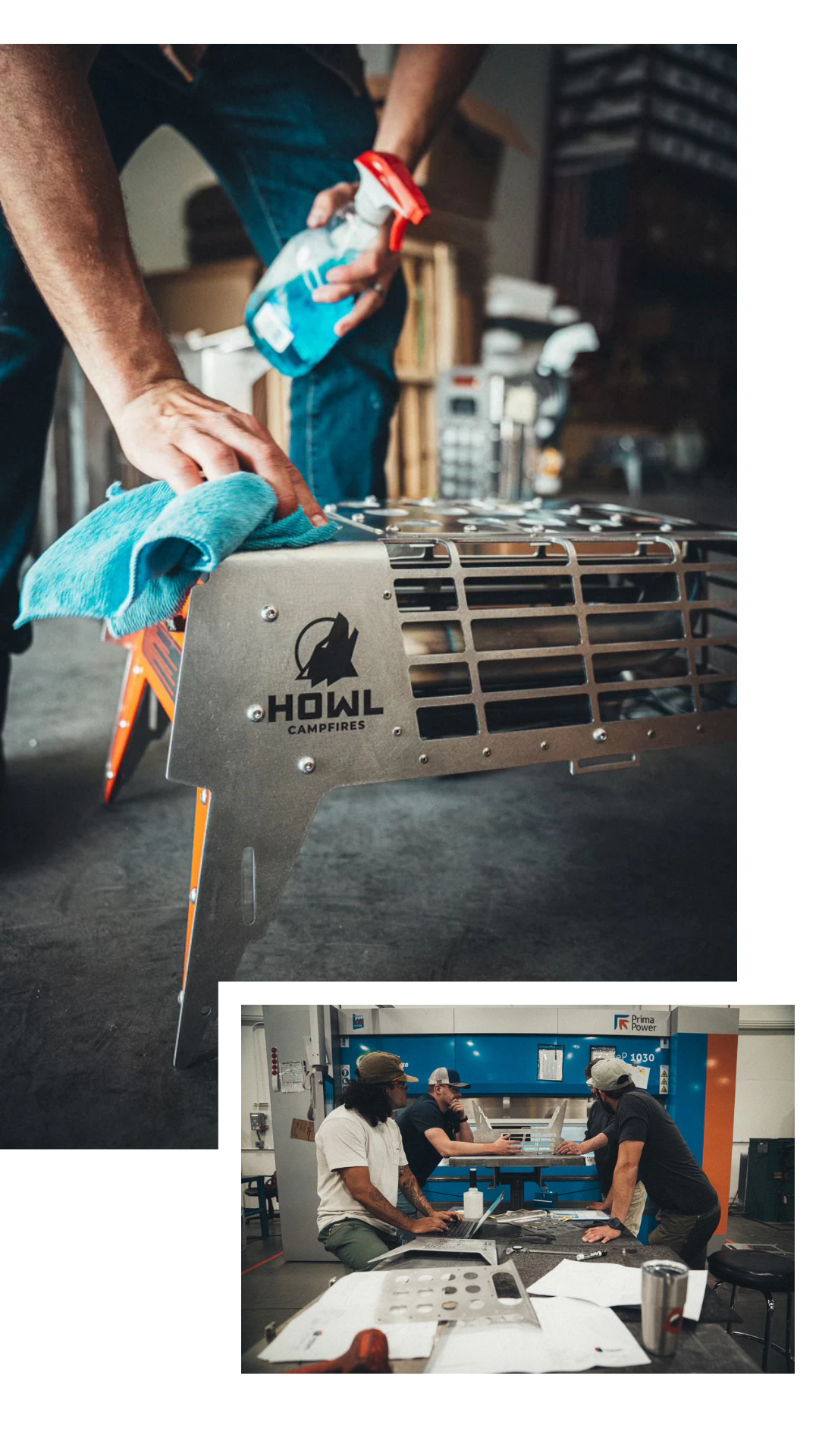
We fabricate the parts you can see here at our factory in Aurora, Colorado, like the Pressbrake Frame, BarCoal Tube Chassis, EchoHeat Reflector Shield, and about a dozen others.
Why manufacture in Colorado? Two reasons: 1) complete control, and 2) meaningful jobs.
Complete control is essential to quality
To make sure your HOWL will keep you warm for a lifetime, we control everything. We test every part and subassembly, every gas line connection, every rivet, and every weld.
Once a HOWL is fully assembled, we test it to make sure the BarCoals reach 1,200ºF in under 3 minutes, and to make sure the A-Flame leaps 24” above the Windscreen. Only then do we crate it and ship it to you.
A meaningful job makes everything better
It makes things better for yourself, your family, and your customers. It frees you up be creative and do great work. It helps you contribute to the communities you're a part of. It lets you look ahead, so you can make things better for future generations.
By keeping our manufacturing here, everyone who works on the HOWL also gets to live and camp here. That gives our team a natural bent toward helping our forests and outdoor communities thrive. You see that bent show up in our priorities, our daily decisions, and ultimately, in our products.
Every year, US wildfires burn an area equivalent in size to the entire state of Connecticut. Humans start 84% of those fires.
And because our forests are overloaded with fuel after years of fire suppression, today's wildfires burn bigger and hotter than natural fires.
To combat the crisis, land managers are implementing more and more burn bans. These bans prohibit wood fires, but allow propane fire pits since they're safer for forests. That means propane fire pits are incentivized by law.
Propane fires have other key factors that should be increasing their adoption. They've been on the market for decades, people are familiar with them, they're available at every major retailer, and most of them are cheap.
Yet hardly anyone brings them camping. Since they lack heat, they're a massive sacrifice compared to a wood fire, so most people just burn wood.
Unfortunately, that just means more wildfires. Even as the frequency of burn bans increases, the number, size, and severity of wildfires caused by escaped wood fires keeps going up.
If we want fewer wildfires, something has to change. And people don't change unless you give them something better.
That's why we invented the HOWL.
You shouldn't have to live in a world where camping means freezing around heatless propane fire pits. But you also shouldn't have to live in a world where your favorite places, one by one, burn to ashes.
We need campfires, and we need forests. Both have been core to the human experience for thousands of years, and you deserve to have them both. So do your kids and grandkids.
So that's what we're here fighting for. All of this over-engineering, over-thinking, over-writing (you're still reading this!?), it all has a purpose. One that you can join.
HOWL exists to keep the forest and the campfire alive.



